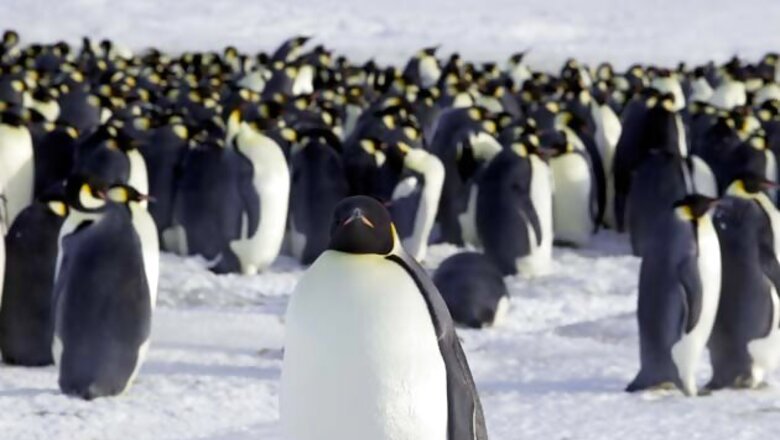
views
Washington: Rapid sea ice melting in Antarctica threatens the lives of Emperor penguins, and if global temperatures continue to rise, the largest sea birds may eventually disappear, a new study has claimed.
Unlike other sea birds, the four-feet tall Emperor penguins breed and raise their young almost exclusively on sea ice.
If that ice breaks up and disappears early in the breeding season, massive breeding failure may occur, said the researchers from Woods Hole Oceanographic Institution (WHOI). "Over the last century, we have already observed the disappearance of the Dion Islets penguin colony, close to the West Antarctic Peninsula," said Stephanie Jenouvrier, the lead author of the study published in the journal Global Change Biology.
"In 1948 and the 1970s, scientists recorded more than 150 breeding pairs there. By 1999, the population was down to just 20 pairs, and in 2009, it had vanished entirely."
Like in Terre Adelie, a coastal region of Antarctica where French scientists have observed penguins for more than 50 years, Jenouvrier thinks the decline of those penguins might be connected to a simultaneous decline in Antarctic sea ice due to warming temperatures in the region.
Disappearing sea ice, the researchers said, may also affect the penguins' food source. The birds feed primarily on fish, squid, and krill, a shrimplike animal, which in turn feeds on zooplankton and phytoplankton, tiny organisms that grow on the underside of the ice.
If the ice goes, so too will the plankton, causing a ripple effect through the food web that may starve the various species that penguins rely on as prey, Jenouvrier said.
To project how penguin populations may fare in the future, Jenouvrier's team used data from several different sources, including climate models, sea ice forecasts, and a demographic model that Jenouvrier created of the Emperor penguin population at Terre Ad lie.
Jenouvrier used the output from these various climate models to determine how changes in temperature and sea ice might affect the Emperor penguin population at Terre Ad lie. She found that if greenhouse gas emissions continue to rise at levels similar to today causing temperatures to rise and Antarctic sea ice to shrink penguin population numbers will diminish slowly until about 2040, after which they would decline at a much steeper rate as sea ice coverage drops below a usable threshold.
"Our best projections show roughly 500 to 600 breeding pairs remaining by the year 2100. Today, the population size is around 3000 breeding pairs," Jenouvrier said.
The effect of rising temperature in the Antarctic isn't just a penguin problem, according to Hal Caswell, a WHOI senior mathematical biologist and collaborator on the paper. As sea ice coverage continues to shrink, the resulting changes in the Antarctic marine environment will affect other species, and may affect humans as well.
"We rely on the functioning of those ecosystems. We eat fish that come from the Antarctic. We rely on nutrient cycles that involve species in the oceans all over the world," he said.
"Understanding the effects of climate change on predators at the top of marine food chains like Emperor penguins is in our best interest, because it helps us understand ecosystems that provide important services to us."



















Comments
0 comment